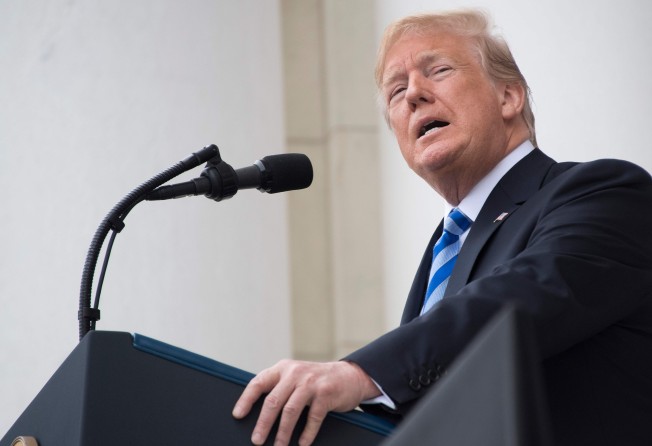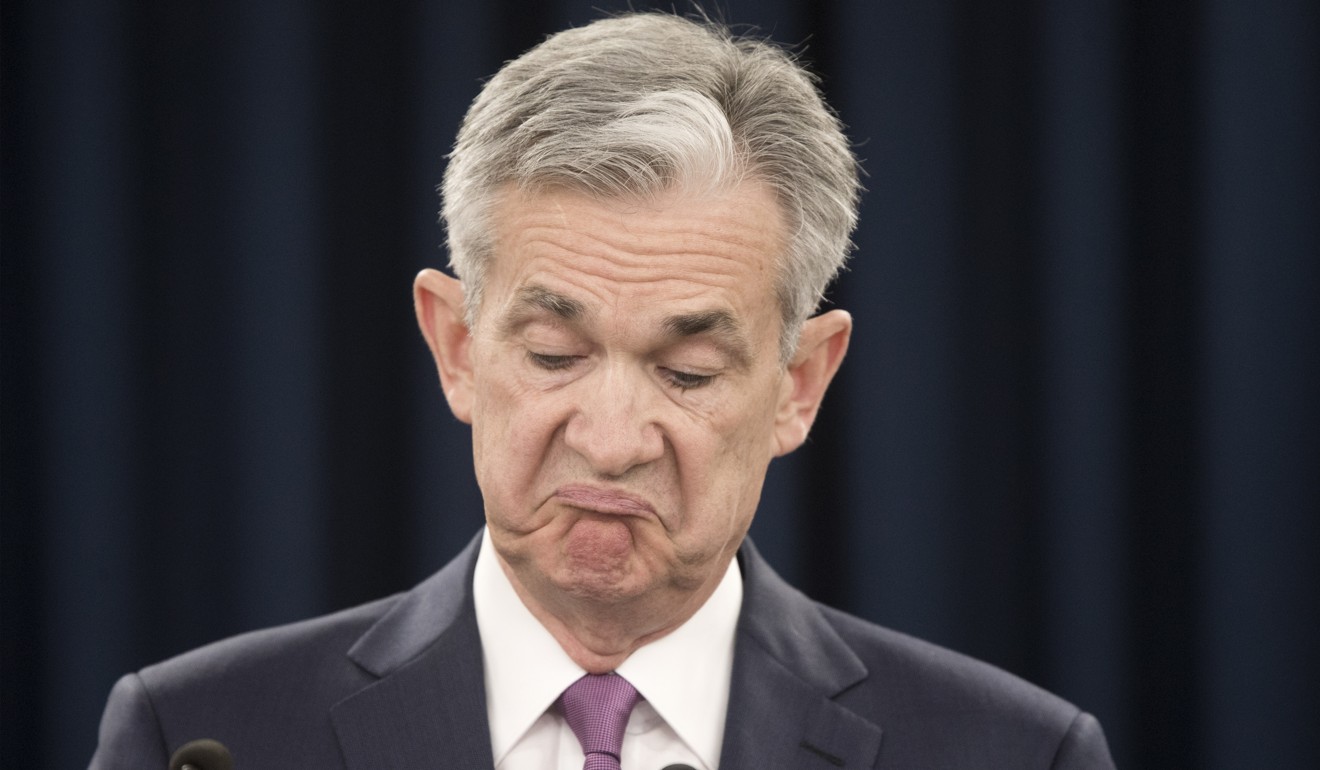Why a weaker euro means Trump’s trade war may not be so easy for him to win
Neal Kimberley says moves by the European Central Bank and Federal Reserve may result in a weaker euro against the dollar, affecting the price of US exports and imports, and undermining the president’s aggressive trade moves

“When a country (USA) is losing many billions of dollars on trade with virtually every country it does business with, trade wars are good, and easy to win,” tweeted US President Donald Trump in March. But as international trade tensions again escalate, the White House might be about to discover that winning is not that simple.
For example, the Trump administration’s announcement on Friday of “a 25 per cent tariff on US$50 billion of goods from China that contain industrially significant technologies” prompted an equivalent but deliberately targeted response by Beijing on, among others, a variety of US agricultural exports.
With US midterm elections in November, Beijing might well be making the political calculation that the Trump administration will be sensitive to complaints from US farmers ahead of the polls.
Additionally, Beijing is not the only one experiencing trade tensions with Washington. The European Union and the United States are also engaged in a trade dispute that has led to tariff impositions by both sides.
In truth, tariffs can be removed just as quickly as they are imposed and an accommodation can be reached. What are more difficult to reverse are market trends and it’s in the currency space, in particular, that the US may find it is less “easy to win” a trade conflict.
But it’s not China’s currency that could prove a major foreign exchange headache for the US; it’s the euro.
While US bank Morgan Stanley noted that the People’s Bank of China (PBOC) posted the US dollar to Chinese yuan fixing at 6.4306 on Friday, 122 pips higher than the 6.4184 the firm’s model had anticipated, it surmised that the PBOC was “trying to position for [yuan] weakness” ahead of the trade tariffs Washington announced later in the day.
Yet Morgan Stanley doesn’t “foresee the PBOC positioning for outsized [yuan] weakness”, as that would run counter to the Chinese central bank’s “current goals of financial liberalisation and attracting foreign inflows into China’s onshore market”.
China pledges to allow more foreign investment in financial sector
Also, as PBOC governor Yi Gang reiterated in April, China has “adopted a managed floating exchange rate regime based on market demand and supply with reference to a basket of currencies”. That, of course, doesn’t preclude yuan weakness versus the US dollar, but it does contextualise it within a currency basket framework.
Meanwhile, following last week’s Federal Reserve and European Central Bank (ECB) policy meetings – and although it probably won’t be too welcome in the White House – such is the difference in tone between those particular central banks that a persuasive argument can be made for renewed euro weakness versus the US dollar that would work in favour of euro-zone exporters.
The contrast between the ECB and the Fed couldn’t be starker.
Last Wednesday’s Fed meeting saw another interest rate increase. That decision was also accompanied by US policymakers lifting projections for the probable number of hikes this year to four, from three, and deleting the prior forward guidance that had said “the federal funds rate is likely to remain, for some time, below levels that are expected to prevail in the longer run”. The Fed delivered a hawkish hike.

Yet, a day later, the ECB delivered a completely different message. While it anticipates ending its asset purchase programme at the end of this year, it also stated it expected key ECB interest rates to “remain at their present levels at least through the summer of 2019”. The ECB’s overall message was dovish and the euro sold.
Looking ahead, investment research firm TS Lombard noted on Friday that the policy rate gap between the ECB and the Fed “is now 2.4 per cent” and, based on their expectations that the Fed will raise rates by 25 basis points every quarter, it is set to widen by a further 1 per cent in the next 12 months.
“The negative carry associated with [the euro] is becoming a drag on the currency,” TS Lombard’s Europe Team concluded.
If a weaker euro again becomes a market trend, it might also mean a lower value for that currency versus the yuan. The Chinese currency might then fall somewhat against the US dollar as a counterweight, in line with the basket of currencies framework of China’s current managed floating exchange rate system.
The net effect would be that the currency market would have delivered a stronger US dollar, which renders American exports more expensive, but imports into the US cheaper.
Winning trade wars may not be quite as easy as Trump first tweeted.
Neal Kimberley is a commentator on macroeconomics and financial markets